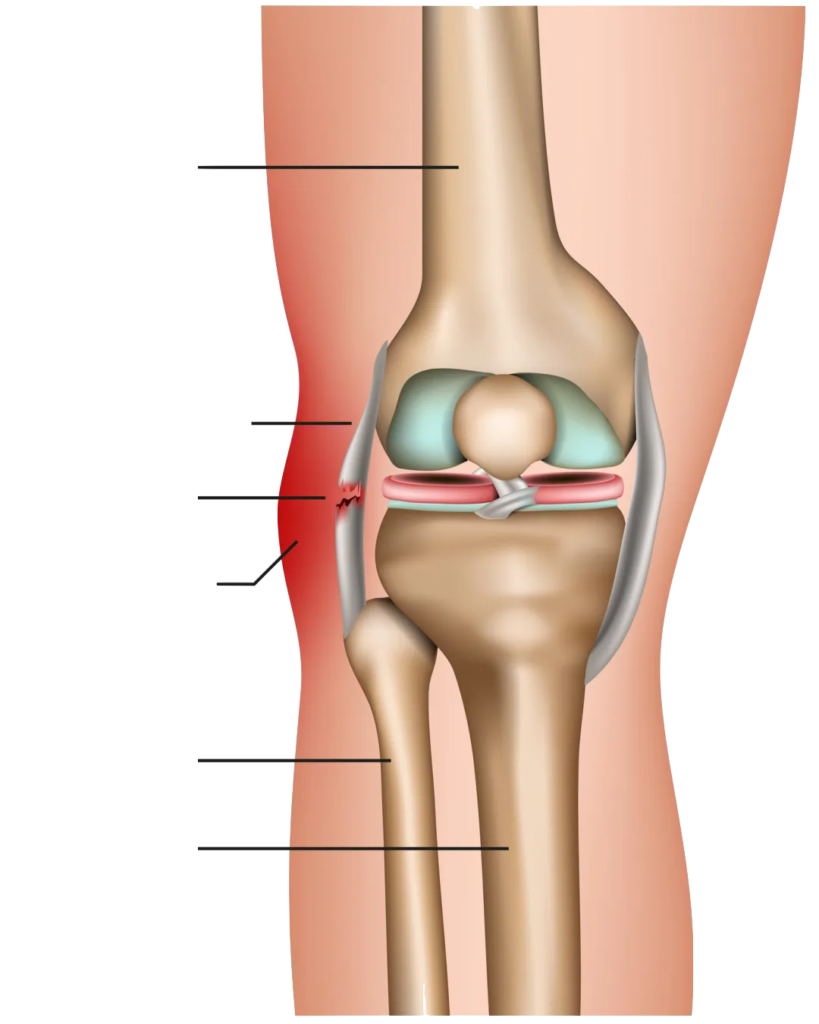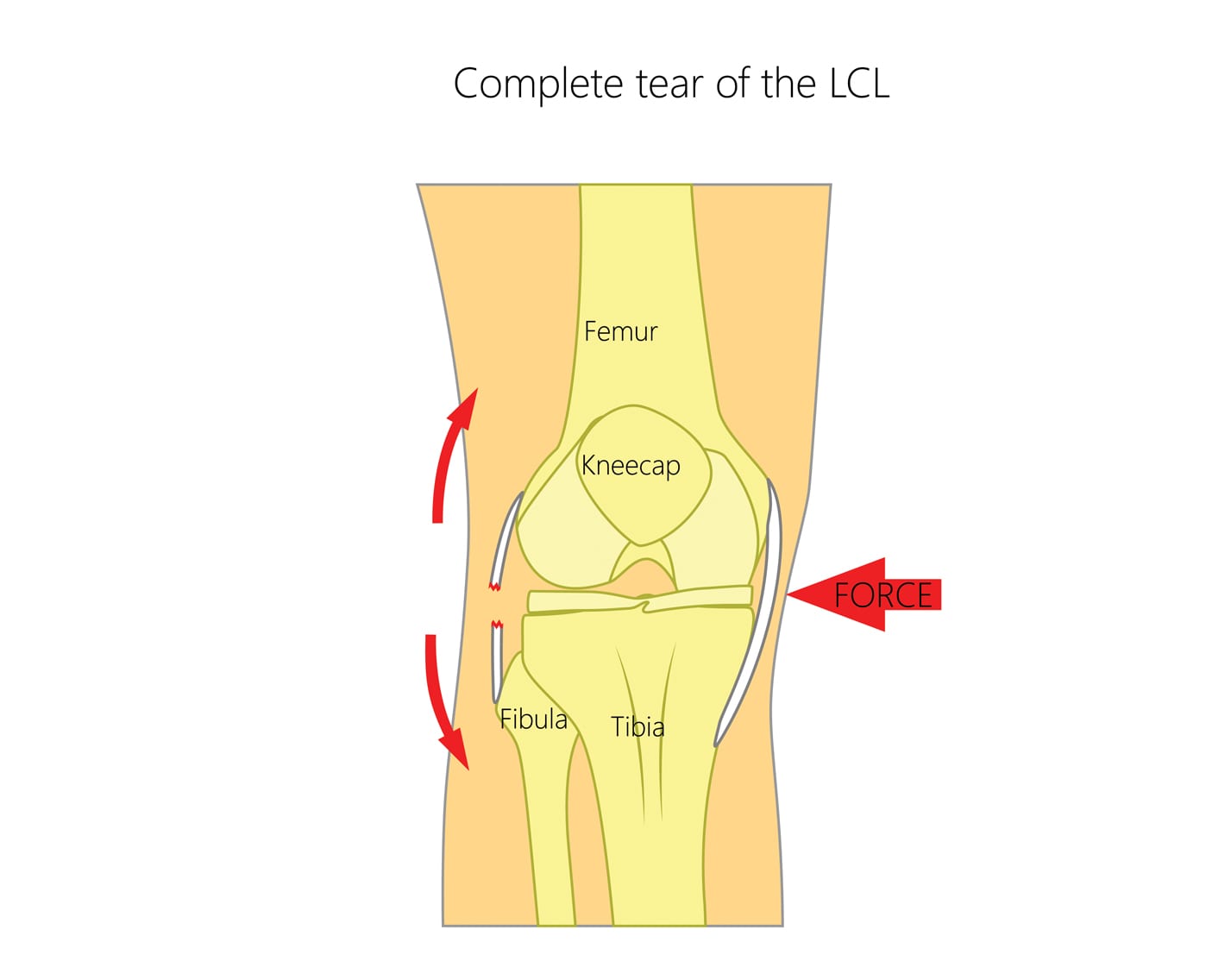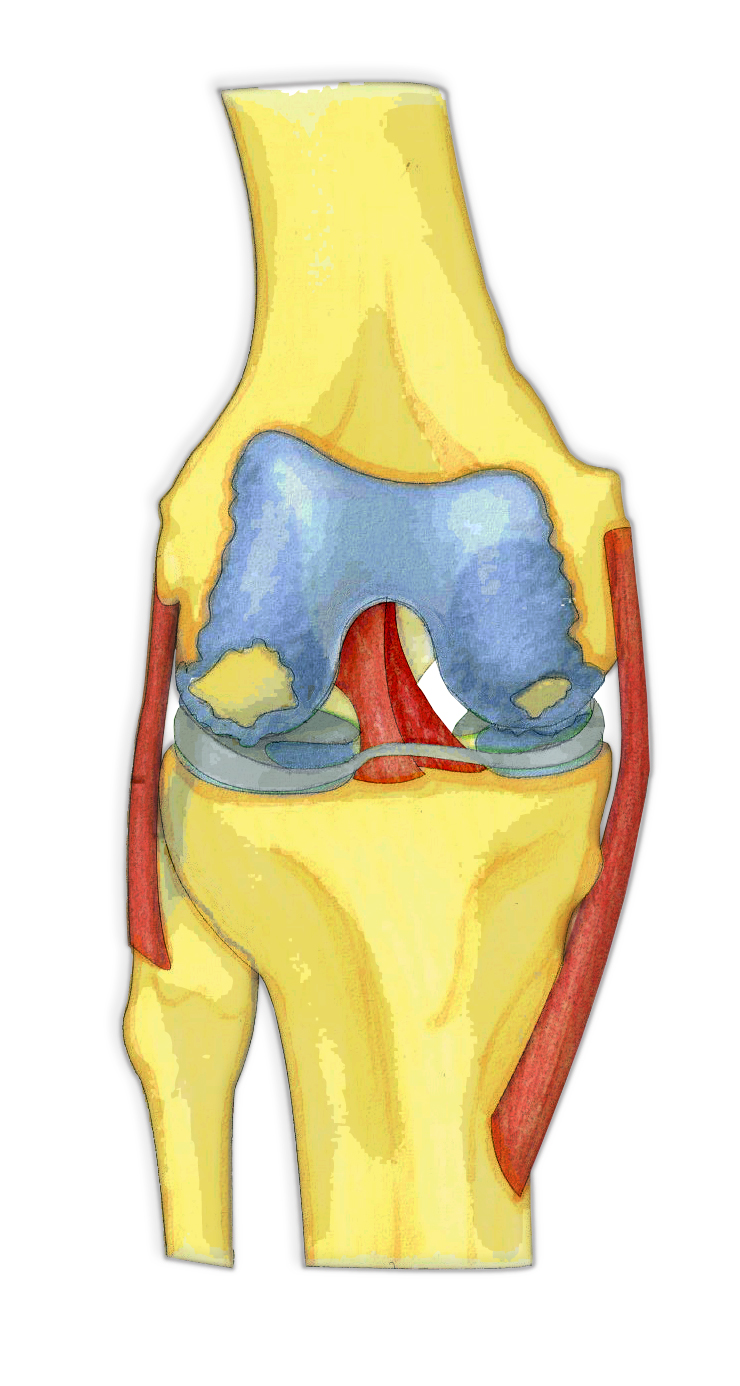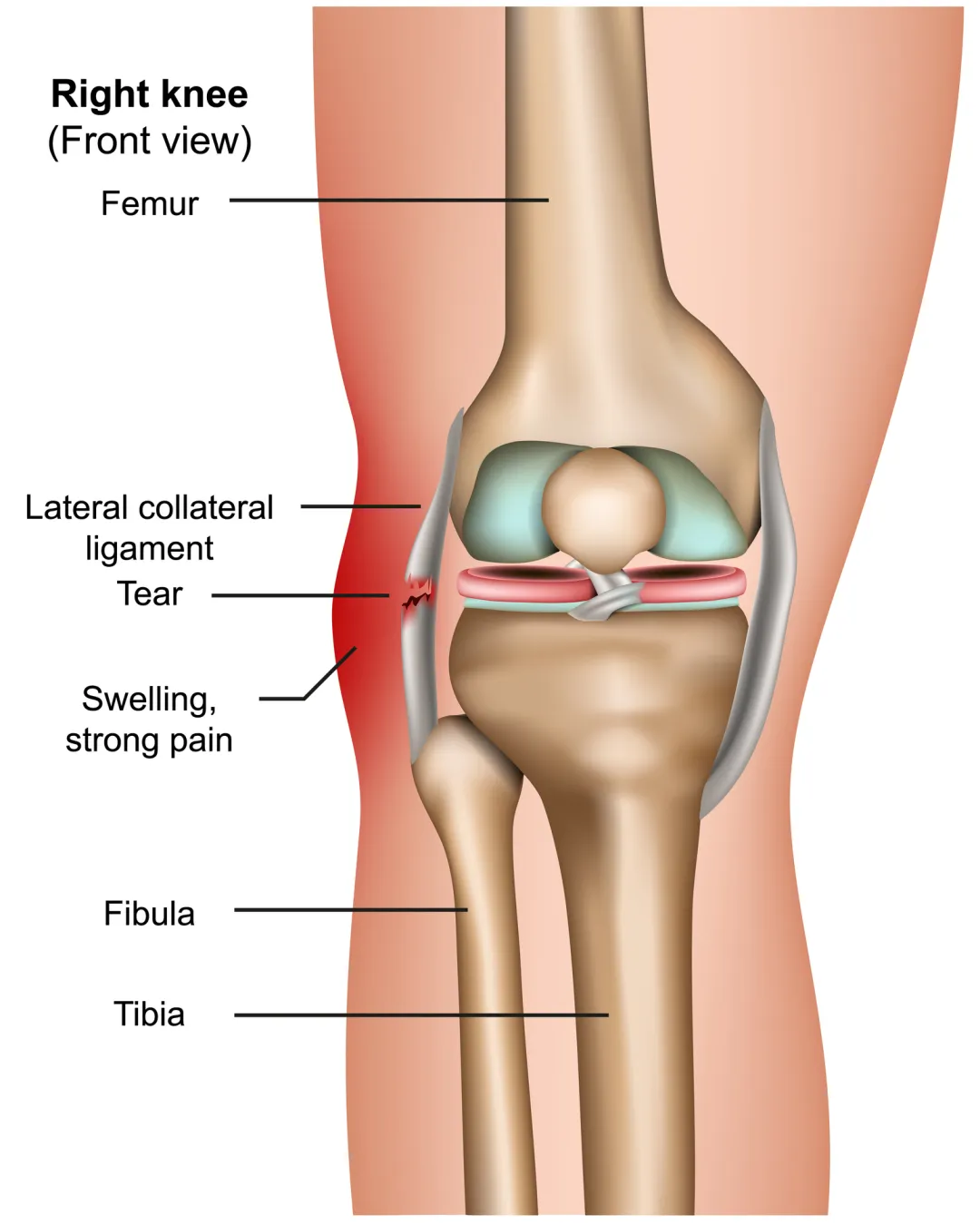LCL Injury

If you are an athlete, then you have likely heard someone mention something about the lateral collateral ligament, or LCL. This is a ligament that is found in the knee and helps to keep it stable. Unfortunately, injuries to the LCL can be quite common. In this comprehensive guide, we will take a look at what causes LCL injuries, how they are treated, and how to prevent them from happening. Let’s get started!

What is a Lateral Collateral Ligament (LCL) Injury?
A lateral collateral ligament (LCL) injury is a tear of the ligament that stabilizes the knee joint on the outside of the leg. The LCL runs from the femur (thigh bone) to the fibula (smaller bone in the lower leg), and helps to keep the knee stable.
LCL injuries can occur due to a direct blow to the outside of the knee, or from twisting or overstretching the ligament. These injuries can range from a mild sprain, in which the ligament is stretched or mildly torn, to a complete tear of the ligament.
Symptoms of Lateral Collateral Ligament (LCL) Injuries

Symptoms of an LCL injury may include:
– pain on the outside of the knee
– swelling on the outside of the knee
– tenderness on the outside of the knee
– stiffness on the outside of the knee
– loss of range of motion on the outside of the knee
– instability on the outside of the knee
– catching or clicking on the outside of the knee
– weakness on the outside of the knee.
If you have any of these symptoms, it is important to see a doctor or orthopedic surgeon. An LCL injury can range from a mild sprain to a complete tear. A complete tear of the LCL may require surgery to repair.
Diagnosis of Lateral Collateral Ligament (LCL) Injury
There are multiple ways to diagnose an LCL injury.
Physical Examination:
The first step is usually a physical examination by a doctor or other medical professional. This will include checking for pain , swelling, and tenderness along the outside of the knee. The doctor may also ask the person to move their knee in different ways to see if this causes pain or discomfort.
Imaging Tests:
In some cases, imaging tests may be ordered to further assess the extent of the injury. This could include an X-ray, MRI, or CT scan. These tests can help to rule out other potential causes of knee pain and can give more information about the location and severity of an LCL injury.
Treatment for Lateral Collateral Ligament (LCL) Injury
There are multiple ways to treat an LCL injury, and the best method will depend on the severity of the injury.
Rest:
If the injury is mild, the first step is usually rest. This means avoiding activities that put stress on the knee, such as running, jumping, or squatting. Ice and over-the-counter pain medication can also be used to help with pain and swelling.
Physical Therapy:
If the injury is more severe, physical therapy may be recommended. Physical therapy can help to improve range of motion, strength, and stability around the knee joint. A physical therapist can also teach exercises and stretches to help prevent future injuries.
Surgery:
In some cases, surgery may be necessary to repair an LCL injury . This is typically only necessary for complete tears of the ligament. Surgery involves reattaching the ligament to the bone using stitches or screws.
Physical therapy will be necessary after surgery to help the knee heal and regain strength.

Recovery from Lateral Collateral Ligament Injury
The time it takes to recover from an LCL injury depends on the severity of the injury. For partially torn ligaments, rest and ice may be all that is needed. Recovery from more severe injuries may take several months. Physical therapy will be an important part of the recovery process, no matter the severity of the injury.
It is important to follow the recommendations of a doctor or physical therapist to prevent further injury. Return to activity should only be done when cleared by a medical professional. Failure to do so could result in further damage to the ligament or other structures in the knee
Tips to prevent Lateral Collateral Ligament (LCL) Injuries
Following are some tips that may help you to keep your knee joint stable and prevent an LCL injury:
-Wear proper shoes with good ankle support.
-Stretch and warm up before playing sports or exercising.
-Avoid sudden changes in direction
-Use proper technique when participating in sports or exercising.
-Strengthen the muscles around the knee, especially the hamstrings.
-Cross-train to avoid overuse of the same muscles and joints.
-Wear appropriate protective gear when playing contact sports.
-Avoiding sudden changes in direction is important in preventing LCL injuries.
-If you experience pain or swelling in the knee, rest and ice the area.
-See a doctor if the pain or swelling does not improve.
Frequently Asked Questions about LCL Injuries
The LCL is one of four main ligaments that stabilize the knee joint. It runs along the outside of the knee, from the femur (thighbone) to the fibula (smaller bone in the lower leg), and helps to keep the knee from bending outward.
LCL injuries can occur due to a direct blow to the outside of the knee, or from twisting or hyperextending the knee joint. These types of movements can place excessive stress on the LCL, causing it to stretch or tear.
Anyone can sustain an LCL injury, but certain activities or sports that involve rapid changes in direction or contact (such as football, basketball, and skiing) can put individuals at greater risk. People with pre-existing knee conditions, such as anterior cruciate ligament injuries, posterior cruciate ligament injuries, medial collateral ligament injuries, lateral collateral ligament, or any other knee injuries are more susceptible to a new knee injury.
Symptoms of an LCL tear may include pain and tenderness on the outside of the knee, swelling, locking, bruising, and instability of the knee joint. In more severe cases, the individual may hear a popping sound at the time of injury and have difficulty bearing weight on the affected leg.
LCL injuries are typically diagnosed through a combination of a physical examination and imaging tests, such as X-rays, MRI, or CT scan.
Treatment for LCL injuries will depend on the severity of the injury. For milder strains, rest, ice, and over-the-counter pain medications may be sufficient. More severe tears may require immobilization in a splint or brace, followed by physical therapy to restore range of motion and strength. In some cases, surgery may be necessary to repair a torn ligament.
The prognosis for LCL injuries generally depends on the severity of the injury. Most mild to moderate strains will heal with conservative treatment within 4-6 weeks. More severe tears may require surgery, and may take several months to fully recover. Complications from surgery are rare, but can include infection, nerve damage, and blood clots.
There are a few things you can do to help reduce your risk of sustaining a partial or complete tear of the cruciate ligaments:
-Warm up properly before participating in any physical activity
-Stretch and strengthen the muscles around the knee joint
-Avoid sudden changes in direction or intensity when playing sports
-Wear proper shoes that offer support and cushioning for the knee joint. Hinged knee brace has proved to be helpful in these cases.
-If you have any pre-existing knee conditions, be sure to follow your doctor’s recommendations for treatment and activity modification
3 Ways to Level Up Your Rehab and Injury Prevention With Us





